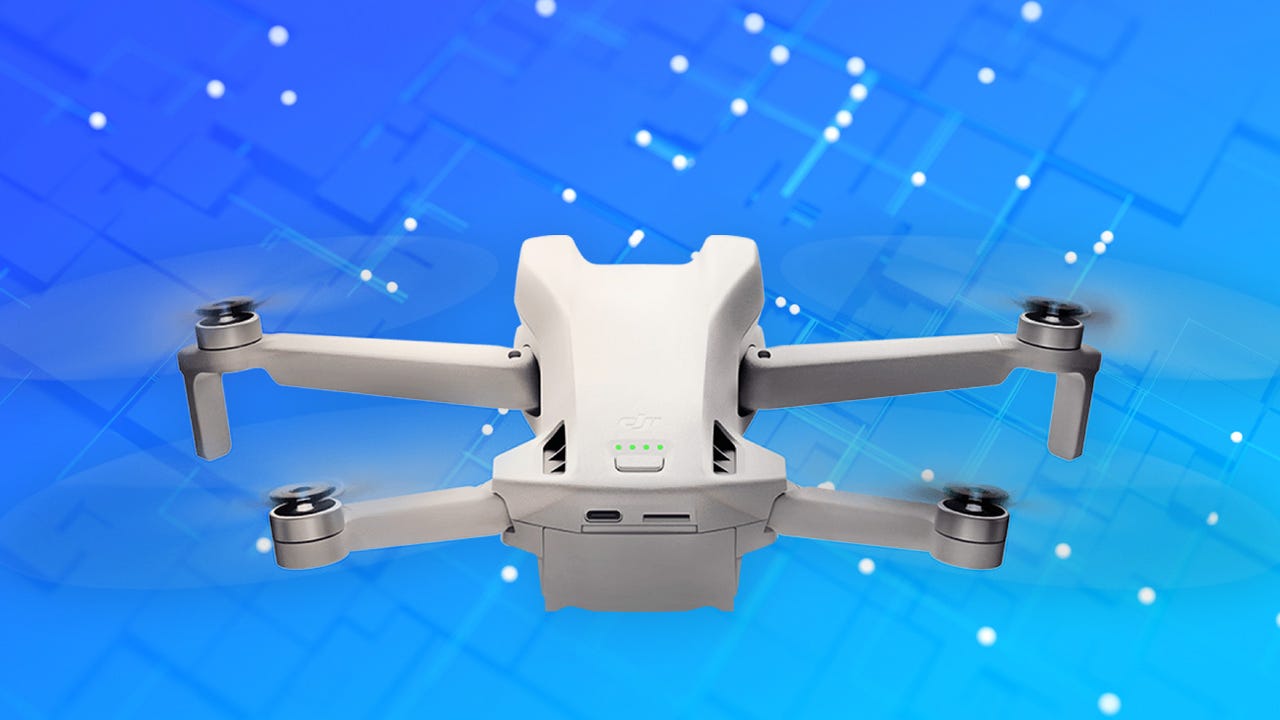The new DJI Mini 3 is aimed at beginners but has plenty of pro features

If you’re looking for a starter drone, I highly recommend checking out the all-new DJI Mini 3, the successor to the highly popular Mini 2, and an entry-level version of the very capable Mini 3 Pro.
Also: The 2022 M2 Apple iPad Pro is my (drone) copilot
I make no secret of the fact that out of all my drones, the Mini 3 Pro is my favorite (yes, even beating the Mavic 3). I like the portability and freedom that the compact sub-249g drone offers.
The Mini 3 takes many of the good bits of the Mini 3 Pro, adds more battery life, and drops the starting price by $200.
DJI Mini 3 specs
- Take-off Weight: 248g
- Max Horizontal Speed: 16 m/s
- Max Flight Time: 38 mins with Intelligent Flight Battery/51 mins with Intelligent Flight Battery Plus (sold separately)
- Max Wind Speed Resistance: 10.7 m/s (Level 5)
- Image Sensor: 1/1.3-inch CMOS, 12-megapixels
- Lens: 82.1° field of view, 24 mm equivalent, f/1.7
- Photo Format: JPEG/DNG (RAW)
- Max Video Resolution: 4K (3840×2160)@24/25/30 fps
- Sensors: Downward-facing
So what you get when you buy a Mini 3 is a flying, stabilized 4K/12-megapixel camera with a theoretical range of 10km (way beyond what you should ever take it), and a rated flight time of 38 minutes with the included battery and 51 minutes with the optional Intelligent Flight Battery Plus packs.
Also: The best drone accessories
DJI’s quoted flight times are, in my experience, very optimistic, and I’d say you’re going to get real-world flight times closer to 28/40 minutes.
Those are still very good flight times.
The standard kit comes with the DJI RC-N1 controller with no screen (you use your smartphone), but there’s an option to upgrade to the DJI RC controller that has a built-in display that adds $140 to the price.
There’s also a “Fly More Combo” option that adds two additional 38-min Intelligent Flight Batteries, a two-way charging hub, a shoulder bag, spare propellers, and a few other bits.
So, where does the Mini 3 differ from the Mini 3 Pro?
The Mini 3 is a highly capable drone, but doesn’t have the obstacle avoidance sensors found in the Mini 3 Pro DJI
Well, in exchange for a few minutes more flight time, you lose two main things: 4K recording at 60 frames per second and the forward/read-facing sensors.
Also: The best drones: Which flying camera is right for you?
Yes, just like the Mini 2, the Mini 3 doesn’t have obstacle avoidance sensors and only has a downward-facing sensor for landing. While I never trust sensors, they’re nice to have, especially when flying close to the tree line or around buildings.
Are those sensors worth the extra $200? That’s something for you to decide. Or do you want to save even more money and pick up the Mini 2, starting at $449?
For all the latest Technology News Click Here
For the latest news and updates, follow us on Google News.
